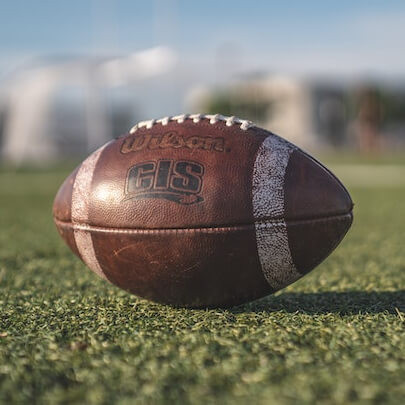
The National Football League suspended the Monday night game between the Buffalo Bills and Cincinnati Bengals, when Bills safety Damar Hamlin collapsed after a tackle. Emergency medical units immediately rushed to the field to treat him. Players were visibly shocked and shaken. Some were crying. Later, players from both teams shielded Hamlin, while doctors were working on him, and they prayed together for his recovery.
WATCH: Paving the Road to Self-Care with Self-Awareness and Self-Compassion
History of the NFL’s Missteps in Human Resources
As an employer, the National Football League (NFL) has a spotty record – and that’s putting it mildly – when it comes to HR best practices. In recent years, it has come under scrutiny for a myriad of missteps. For starters, it allegedly discriminated against coaches of color when hiring.
As other employers are providing platforms and support for employee activism, the NFL essentially blocked San Francisco 49ers quarterback Colin Kaepernick from playing after he began kneeling during the national anthem in protest of police brutality and racism. While the NFL has backtracked and tried to correct some of these issues, they still happened.
WATCH: HR and Future of Work
In addition, the NFL has failed to protect players from the violence of the game. Science has proven that the many knocks to the head and concussions that many players face during the course of their career can cause chronic traumatic encephalopathy (CTE), which causes parts of the brain to atrophy. In its three stages, CTE can cause psychiatric problems, including aggression and suicidal thoughts, and cognitive and motor skills loss, including dimentia.
One study reported by USA Today found that 87% of the players studied had CTE. Many former players have spoken out about the fact that they often continued playing despite injury or concussion. The reported culture meant that NFL coaches and administrators expected players to keep going through the pain.
As recently as December 2022, this issue was in the spotlight because Miami Dophins’ Tua Tagovailoa visibly stumbled after a hit in the game against Green Bay and did not trigger the concussion protocol. He remained in position for the entirety of the loss to the Green Bay Packers. It sparked heated debate and caused criticism because Tagovailoa had already suffered a previous concussion in this season, and it was his third big hit to the head.
Some have suggested that Tagovailoa should retire from the game because of the gravity of these concussions. In early January, CBS reported that Tagovailoa would probably be out for the rest of the season. The NFL has been investigating his health and how decisions were made on the field. But anyone watching the game and how he stumbled when getting up after the hit would recognize something was wrong.
Employees Lead NFL’s New HR
So, when Hamlin stood up from the tackle, which appeared to be a routine one, and then fell onto his back, no one was sure what course the NFL would take. However, the seriousness of his situation became evident almost immediately as medics rushed to his side and his teammates and opponents got emotional at what they were seeing.
In fact, the medics had to perform CPR for 10 minutes to resuscitate Hamlin on the field. He was later rushed to the hospital, where as of Jan. 5, 2022, he is being treated in the intensive care unit (ICU) for having suffered cardiac arrest. He is 24 years old, and he nearly died for football, a mere sport.
No one appeared able to carry on with the game. But the NFL’s track record and the fact that this game between the Bills and the Bengals was a big one ahead of the upcoming Super Bowl made people wonder what decision would be made. Ultimately, Bills Head Coach Sean McDermott said he needed to be at the hospital with Hamlin and his family rather than go on with the game. Bengals Head Coach Zac Taylor agreed and the two decided to suspend play.
In a press conference, Taylor lauded McDermott for his empathetic reaction and willingness to put Hamlin’s health above all else. The captains of both teams later discussed postponing the game.
By all accounts this was the right decision. After all, the NFL has committed to elevating employees, which includes players, and treating them with more respect and dignity. In addition, the organization has made a promise to promote mental health and wellness. Anyone watching the game could see the trauma experienced by everyone in the stadium but especially the players and staff on the field.
Obviously, employers have legal obligations when someone is injured or incapacitated on the job. But it’s more than that now. People are recognizing the emotional compensation employers must offer. The psychological contract is perhaps as important as the salary and other benefits. Employees, like the coaches, players, and staff of the Bills and Bengals, are demanding more of their leaders. They are taking charge in many instances as demonstrated during Monday Night Football.
The NFL has taken a long time to get to this place. Clearly, this decision was a good one. Some might argue it was an obvious choice to make. However, former players, including CNN’s Coy Wire, who played for the Bills, got emotional and said on air that he did not think the NFL of 10 years ago would have suspended the game. Times are clearly changing.
Is this a turning point for the NFL in its HR practices? What do you think? Let us know in the comments or on LinkedIn or Facebook.
Other Case Studies:
What You Can Learn from the Meta Layoffs
Do You Need a Chief Impact Officer Like McDonald’s?
Is Twitter’s Unlimited PTO Policy a Good Model?
Photo by Jean-Daniel Francoeur for Pexels

